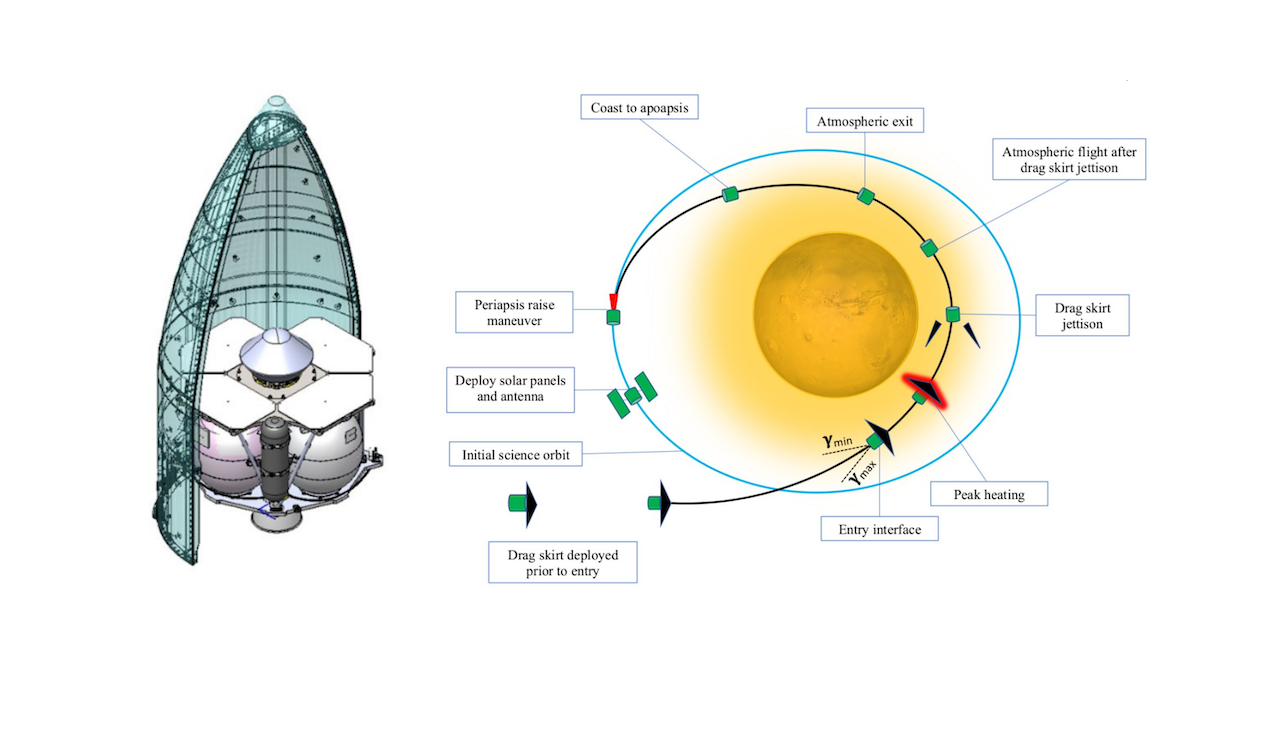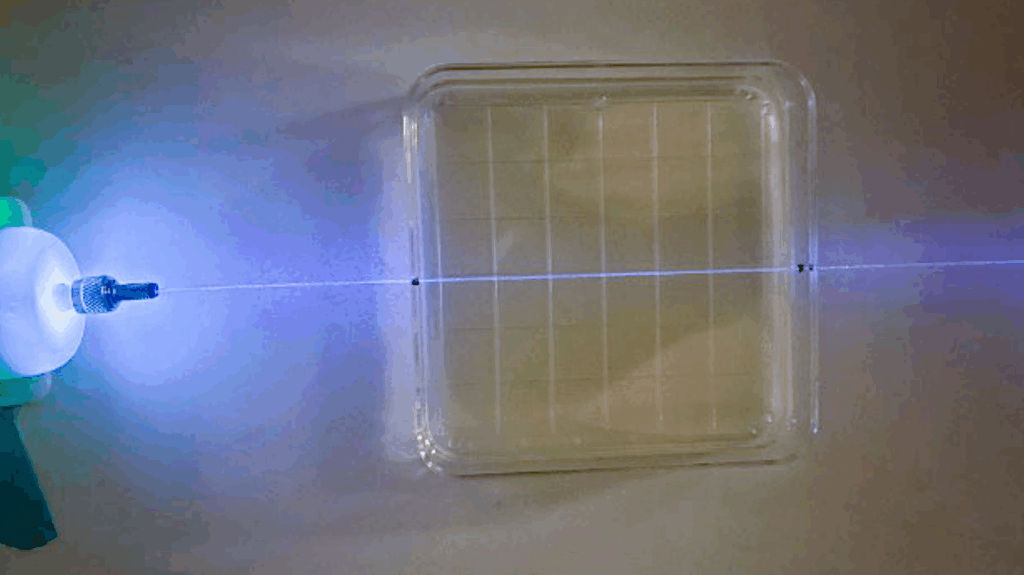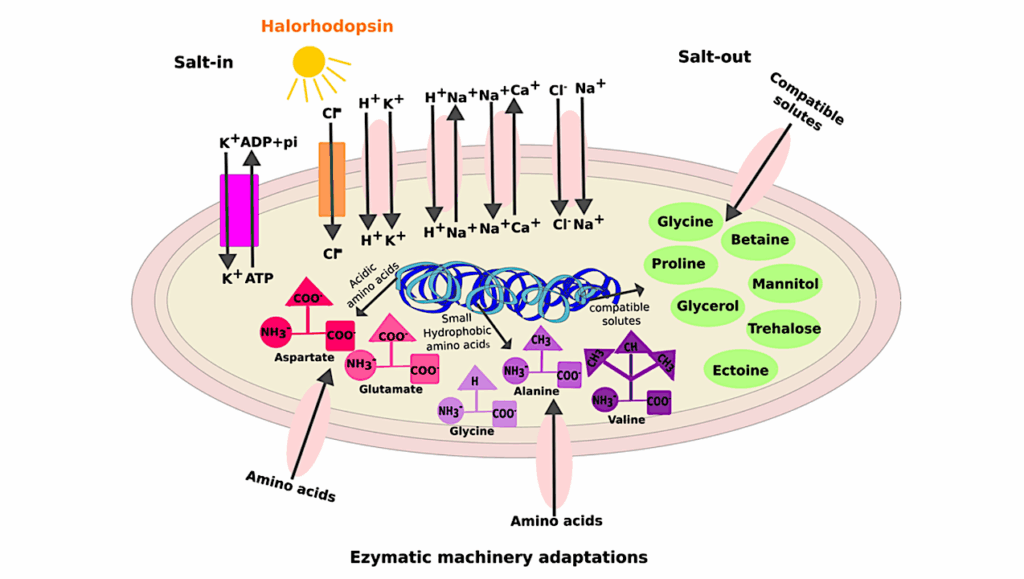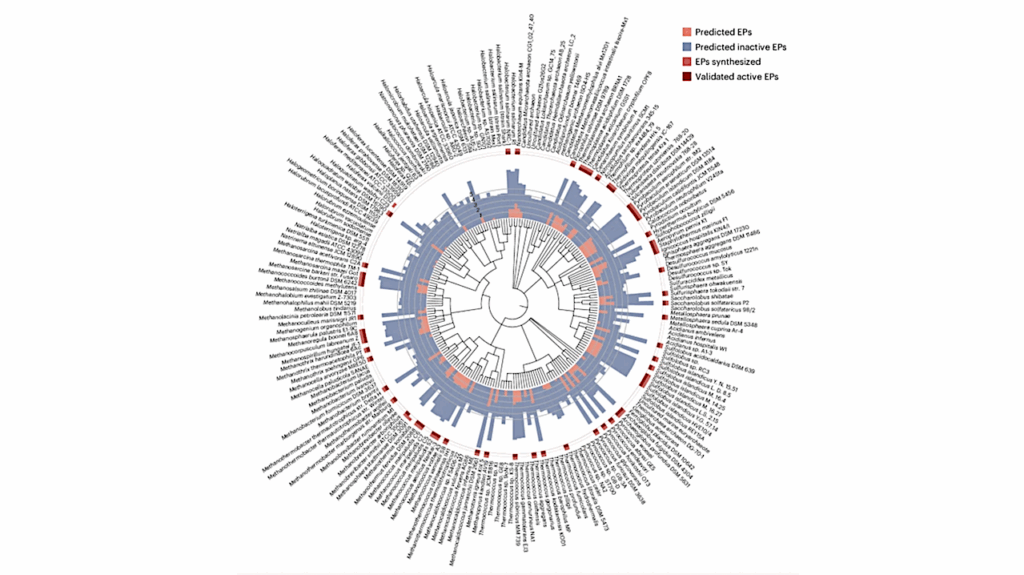Photon Spacecraft and Aerocapture: Enabling Small Low-Circular Orbiters at Mars and Venus

With advancements in low-cost launchers and small interplanetary spacecraft, NASA has recognized the potential of small missions to perform focused planetary science investigations at Mars and Venus.
The EscaPADE, part of the NASA SIMPLEx program will deliver two small spacecraft to elliptical orbits around Mars using the Photon spacecraft. Orbit insertion, particularly to low-circular orbits requires significant propellant, taking up a substantial fraction of the Photon wet mass and present a significant challenge for small missions.
The large ΔV requirements for low-circular orbit make it difficult to insert small satellites into these orbits even with the highly capable Photon, as the total ΔV for Earth escape and orbit insertion exceeds its capability. Drag modulation aerocapture offers a promising alternative, using the atmospheric drag to obtain the large ΔV.
The study shows how the Photon when combined with drag modulation aerocapture can deliver small orbiters to low-circular orbits, enabling a wide range of small orbiter missions. Aerocapture eliminates the need for Photon to provide 2 to 3.5 km/s of ΔV for orbit insertion, which translate into mass and cost savings, and can enable frequent low-cost small orbiters and small satellite constellations at Mars and Venus in the near future.
Athul Pradeepkumar Girija
Comments: 9 pages, 4 figures
Subjects: Earth and Planetary Astrophysics (astro-ph.EP); Instrumentation and Methods for Astrophysics (astro-ph.IM); Applied Physics (physics.app-ph)
Cite as: arXiv:2310.00891 [astro-ph.EP] (or arXiv:2310.00891v1 [astro-ph.EP] for this version)
https://doi.org/10.48550/arXiv.2310.00891
Focus to learn more
Submission history
From: Athul Pradeepkumar Girija
[v1] Mon, 2 Oct 2023 04:17:20 UTC (901 KB)
https://arxiv.org/abs/2310.00891
Astrobiology








